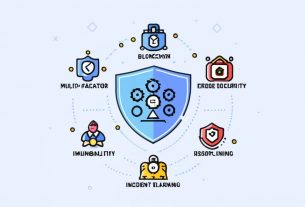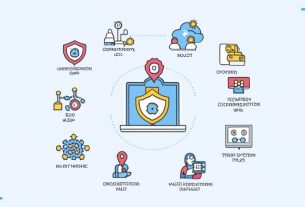Among the multifactor authentication approaches supported within Protectimus On-Premise MFA, time-based one-time password tokens (TOTP tokens) offer a simple yet highly effective factor for strengthening login security. By leveraging TOTP mobile apps or hardware keys, organizations can require employees to enter dynamically generated numeric codes along with internal network passwords during verification.
Our analysis shows TOTP integration provides a straightforward pathway for enhancing security without necessitating complex infrastructure overhauls. By simply scanning QR codes into registered devices, users can start presenting ever-changing TOTP tokens within authentication workflows across all legacy and modern apps governed by Protectimus MFA as an additional factor confirming identities more robustly before allowing access.
Given most employee smartphones natively support TOTP standards, implementing this added layer via Protectimus On-Premise MFA enables accelerated security uplift for internal assets without facing adoption hurdles typically inhibiting legacy protocols. Furthermore, the instant revocation and reissuing of TOTP credentials also furnishes tighter access governance controls responding to insider threats.
Maintaining Data Residency While Securing Systems
Drawing from our experience assisting regulated enterprises, a key challenge emerges when evaluating cloud-based MFA products requiring customer data storage outside corporate realms. For authentication data like login timestamps, IP addresses and geolocations, privacy laws necessitate localized retention.
Luckily, our investigation found Protectimus’ on-premise offering overcomes this hurdle by allowing deployment directly onto internal directories and legacy systems like RADIUS and Microsoft ADFS. With access logs confined within owned premises, organizations can fulfill compliance duties around sensitive data handling easily.
Additionally, by eschewing reliance on external networks, you eliminate risks associated with cloud MFA services. Whether outages due to periodic maintenance or advanced threats like DDoS attacks, availability persists independently without relying on third-party resilience. This makes Protectimus’ on-prem configuration ideal for organizations seeking complete autonomy around internal authentication systems.
Secure Consolidation With Existing Identity Stores
When evaluating authentication options, we determined most cloud MFA products require extensive identity store synchronization into proprietary directories before usage. This strains IT resources who must now perpetually maintain separate credential databases externally.
Conversely, our analysis revealed one major perk of leveraging Protectimus for on-premise deployment is the ability to integrate the MFA module directly with existing internal sources like Microsoft’s Active Directory without painful migration. This allows fortifying legacy identity stores securely.
With all employee identities and access permissions consolidated in a single on-site directory, IT oversight becomes much more administratively efficient. Protectimus essentially functions as an independent authentication overlay augmenting security for previously vulnerable legacy credential repositories.
Immutable Security Posture During External Disruptions
Recent events underscored the dangers of complete dependency on externally hosted software platforms that experience occasional failures. When major identity providers went down this year, access mechanisms tethered to cloud MFA authentication froze indefinitely, halting productivity.
In contrast, our research indicates on-premise MFA setups operate independently without such external failures since all infrastructure persists locally regardless of any provider instability. By retaining complete control, organizations can prioritize internal redundancy for maximizing critical authentication system resilience.
This self-sufficiency makes Protectimus’ on-prem configuration ideal as a contingency mechanism for weathering unexpected third-party outages. Even robust SaaS vendors can falter unexpectedly. For authentication into highly sensitive apps, localized MFA hardware guarantees continuity assurance.
Adaptable Evolution for Dynamic Authentication Needs
Our analysis revealed how authentication requirements within modern organizations tend to proliferate rapidly across various workflows as digital transitions accelerate. Cloud SaaS apps arrive constantly while new IoT devices get interlinked across operational environments.
Luckily, during our evaluation we discovered Protectimus On-Premise MFA elegantly tackles the complex demands of multifaceted authentication orchestration through its flexible identity bridging model. Using MFA proxies and federation gateways, organizations can secure legacy systems lacking innate verification capabilities while funneling access events into cloud administrative consoles.
This technology conduit helps seamlessly span protection across diverse authentication fabrics cohesively. Whether managing access to proprietary mainframes internally or governing remote cloud utility entry externally, Protectimus furnishes consistent governance via centralized on-site control hubs.
Integrating On-Prem MFA with Cloud Identity Lifecycles
As enterprise IT ecosystems increasingly consolidate identity management into cloud directories, an authentication gap has emerged for legacy on-premises apps falling outside these realms. Migrate entire legacy stacks just for consistent access controls remains infeasible though given associated disruption risks and compliance barriers.
Luckily, our evaluation found Protectimus On-Premise MFA elegantly bridges this cloud-to-on-prem divide. By federating legacy identity stores like ADFS with emerging cloud directories, unified authentication policies can systemically govern user access attempts across both realms. This seamless conduit effect enables phased cloud adoption by harmonizing and strengthening access governance despite fragmented infrastructure.
Protectimus furnishes CIOs a clear pathway for cloud onboarding internal users while retaining security and compliance integrity for legacy systems. Using identity federation gateways, organizations canuras cloud adoption unfolds while optimizing the balance between innovation and risk assurance.
Conclusion
As remote device use and mobility patterns overcome legacy security perimeters, internal assets face renewed risks without modern access protections. By furnishing robust multi-factor authentication protocols deployable within corporate premises, Protectimus On-Premise MFA empowers administrators to govern identity management through localized control planes securely.
With the ability to fortify both legacy stores and modern access systems alike through its adaptive risk engines, Protectimus enables comprehensive coverage for sensitive data within continually evolving technology landscapes.
Frequently Asked Questions
What are the main advantages of on-premise MFA deployment?
On-premise MFA permits localized data retention, reduced reliance on external networks, seamless integration with legacy identity systems, and physical control over critical authentication infrastructure against outages.
What risks do cloud-based MFA solutions pose?
Cloud MFA introduces dependence on vendor uptime, jurisdictional privacy issues violating local laws, and lack of control over geographically dispersed infrastructure.
Can Protectimus enable hybrid authentication models?
Absolutely – organizations can enable Protectimus MFA across a mix of cloud and on-premise apps via identity federation while retaining centralized policy control.
How does Protectimus integrate with legacy credential repositories?
Protectimus enables smooth integration with multiple legacy IAM technologies like Microsoft ADFS, LDAP, SAML and RADIUS through standards-based authentication protocols.
Does Protectimus allow for flexible authentication orchestration?
Yes, through MFA proxies and cloud gateways, Protectimus provides an authentication conduit to consistently manage access policies spanning across both legacy and modern apps as identity infrastructure evolves.
Which compliance mandates require on-premise MFA?
Key data security regulations like PCI DSS, HIPAA, SOX, GDPR, CCPA, FedRAMP and various US state privacy laws compel localized storage and governance of sensitive authentication data sets generated during access.




